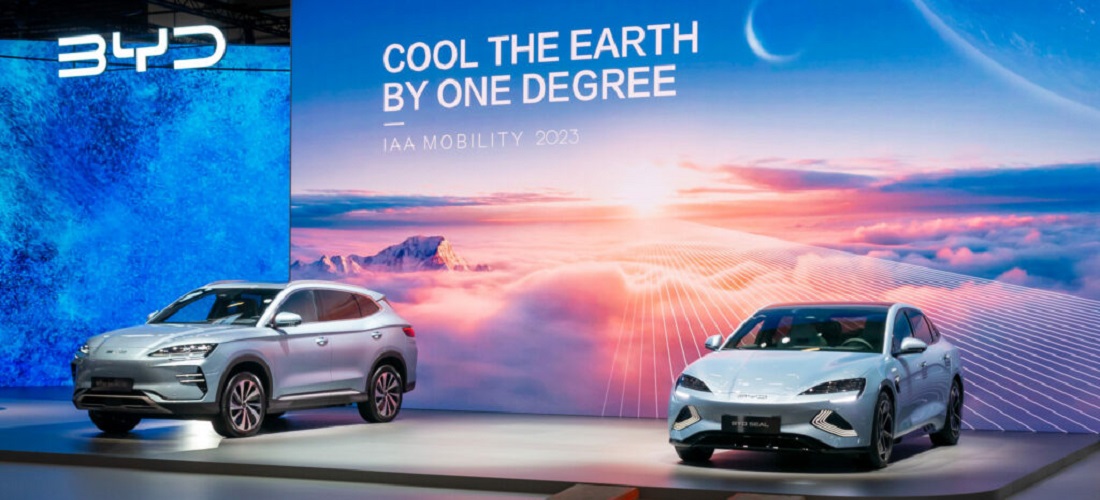
EU Tariffs on Chinese Electric Vehicles: from Trade to Investments

In
On Friday morning, 4 October, European Union member states gave their approval to new import tariffs on Chinese electric cars. Despite a final charm offensive by Beijing to stop the measure, China failed to convince enough countries. Only five member states – including Germany – voted against it.
*****
EU Tariffs on Chinese Electric Vehicles: from Trade to Investments
On Friday morning, 4 October, European Union member states gave their approval to new import tariffs on Chinese electric cars. Despite a final charm offensive by Beijing to stop the measure, China failed to convince enough countries. Only five member states – including Germany – voted against it. Belgium and 11 other countries abstained, rendering 10 votes sufficient to give the European Commission the power to impose these tariffs. The decision to introduce tariffs came after an in-depth investigation by the European Commission, which found that Chinese electric vehicle (EV) production was unfairly subsidised, undermining European competitiveness.
The new tariffs can be as high as 45% and were set per manufacturer based on state aid received and their cooperation during the investigation. Although the duties are high by European standards, Chinese brands are unlikely to disappear from the market any time soon. In fact, Chinese EVs are already sold at higher profit margins in Europe, meaning that even with these tariffs, they can still remain competitive.
The success of the Chinese electric car is no accident. The Chinese government has pursued extensive industrial policies over the past decades that have strongly supported its car and battery manufacturers. Between 2009 and 2023, the Chinese government is said to have provided about US$ 231 billion in subsidies to the sector. However, the biggest contribution to its success was made by instigating fierce competition within the Chinese EV market. This struggle to produce the best, most efficient vehicles for Chinese consumers led to innovations and strong vertical integration with battery producers and raw material suppliers.
The introduction of these new European tariffs is a blow to Chinese authorities, as electric vehicle exports are a key part of China’s growth model under President Xi Jinping. The EU has been the biggest single export market for Chinese EVs in recent years. Trade barriers pose a risk for China, especially if a precedent is set that could also affect other green sectors. Yet it will be difficult for China to challenge these tariffs internationally, as the European Commission has acted carefully within World Trade Organisation (WTO) frameworks.
Meanwhile, Chinese retaliatory tariffs on European exports such as pork and cognac could be weaponised to convince European countries to go back on their decision. In recent years, tariffs have increasingly become a part of global trade policy, not just in the EU. For instance, the US has quadrupled tariffs on Chinese cars to 100% under President Biden. Other countries, such as Brazil and Turkey, have also imposed their own tariffs on Chinese EVs.
In countries like Brazil and Turkey, these tariffs are meant to encourage Chinese companies to invest locally. This strategy seems to be paying off. Turkey benefits from increasing Chinese investment and its membership of the European Customs Union, which facilitates Turkish exports to the EU.
EV tariffs being on the horizon for the past year, this phenomenon is already noticeable in Belgium too. For instance, Volvo, a subsidiary of China’s Geely, has decided to move production of some models from China to Ghent. This pragmatic response to European tariffs shows how companies are adapting to changing trade conditions.
Hungary has following a similar path: Prime Minister Viktor Orbán is positioning his country as Europe’s ‘battery superpower’, luring Chinese companies such as CATL and BYD to Hungary through investments, setting up manufacturing capacity over there. Even though Hungary voted against the EV tariffs and Prime Minister has responded with indignation, the Central European country will stand to benefit most from these tariffs, as it will be easier for Chinese companies to expand their industrial capacity in Hungary rather than setting up (costly) new plants in other countries.
While the new European tariffs may come at a price for consumers, they may give the European auto industry the breathing space it needs to grow – just as China’s industry has long been protected by trade barriers. However, without additional support measures, such as a European industrial investment fund, an escalation in trade tensions could lead to higher prices and slow down the green transition. In view of the European ban on the sale of new diesel and petrol cars from 2035, it is therefore essential that Europe’s green industry strengthens itself. Tariffs can provide a temporary solution here, but structural investments and strategic collaborations will be inevitable to secure Europe’s position in the global EV market.
Finally, China’s EV success has proved once again that competition is an essential ingredient of any successful industrial policy. Completely shielding European carmakers from the Chinese market – as the US government is doing – would be pernicious for the innovation and competitiveness of European players. The introduction of WTO-compliant and weighted tariffs is a thoughtful step towards a fairer playing field. Yet these tariffs are only part of the solution. Without a clear industrial vision and further investment, Europe risks falling further behind in green technologies. Hence, the next decade will be a crucial balancing act, maintaining Europe’s competitiveness against and with Chinese car manufacturers.
This article was first published in Dutch in De Tijd.
(Photo credit: Matti Blume, CC licence code: CC BY-SA 4.0.)